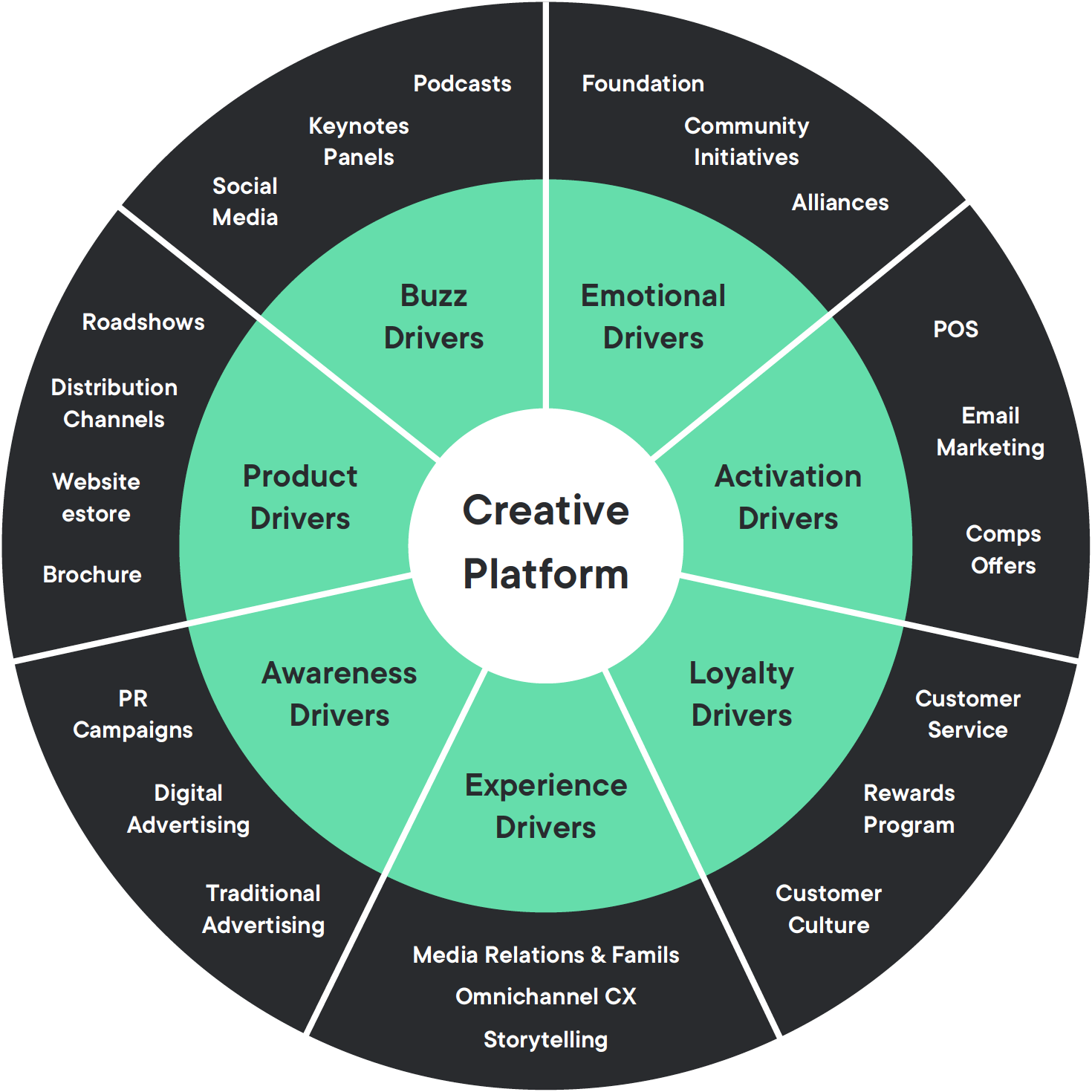This story is part of a series of articles on “Seven Pathways to Strategic Thinking” written by Nigel Malone, Strategy Director at Archetype. If you would like to receive a notification when the next article is published, register here.
‘Integrated’ has been a buzz word in agency land for more than two decades and is still the catch-cry for many a creative shop or communication agency. It all started way back with the rise of the internet and the downturn in dominance of traditional advertising media such as print and television. Agencies in an attempt to regain their relevance, packaged up their approach to the new media-neutral landscape as ‘integrated communication’ and sold it to advertisers as the next big thing.
Despite such a long time in the sun, very few agencies have mastered the art of integrated communication, in theory or practice. Some see it as simply utilising all the different channels of communication available. To an extent this is true, but at its heart, integrated communication hinges on a single, pivotal creative proposition/platform. This ‘big idea’, as some like to call it, is then applied to a spectrum of ‘marketing drivers’ that ensure engagement with the consumer on every possible level.

Once you’ve taken the client brief, gone through the discovery phase, uncovered insights, settled on your strategy and arrived at a creative platform, the next step is to consider each of the ‘integrated drivers’ to help you determine the right mix of tactics. The following diagram shows the drivers radiating out from the creative platform (big idea). The outer ring provides examples of tactics that might be employed for that driver – but is not intended as a definitive list or recommendation – that’s up to you. The whole point of the model is to make you consider each Driver as a starting point for the way you consider the mix, and measure the worthiness, of tactics.
Awareness Drivers
If you believe in the Sales Funnel Model, you’ll see the value in filling the top of the funnel with as many prospects as possible, through mainstream awareness campaigns. For bigger clients this might involve a big TV or digital media buy reaching millions of prospects nationally. For smaller clients getting on the radar of their maximum realistic audience is just as critical, and might involve an ongoing, low-budget social media campaign geo-targeting consumers living within walking distance of their shopfront. Given ‘awareness’ is about getting on the radar, and in the consideration set of brands a consumer will evaluate, such campaigns focus on a brand level in their messaging.
Product Drivers
This driver is all about delivering the product or service story. Who’s it for, what it does, how it will change your life, how much does it cost, where can I buy it? The tactical examples cited in the diagram above might reflect a tech product, say a range of laptops available for sale online or through a retail outlet. But this could equally be about a professional or personal service, described in a menu, brochure, itinerary, or consumer review.
Activation Drivers
These are tactics to accelerate or close the sale, especially with someone who might be sitting on the fence and need a small push to get them over the line. Naturally they will be highly sales focussed, with price points, limited time frames, and graphic calls to action.
Buzz Drivers
Consistency in market is key to remaining top of mind. This driver is about maintaining a buzz – adding an atmosphere of excitement around your activity, but more importantly retaining momentum in the spaces between that activity – so that you don’t fall off the radar. Think of it like retaining a good base level of fitness, during the off season. This could be as simple as keeping a regular social media post calendar, but again will likely be different for every client.
Experience Drivers
There’s two ways to look at Experience Drivers. The first is a means to allow your prospective customers to try before they buy. This could be a test drive, tasting session, a free 14-day trial, and now extends into virtual reality.
The second is the broader customer experience (CX), the systems that support the customer on their full journey, that brings together all channels (traditional, digital, point of sale, in-store and online) to create one unified experience, pre, during and post purchase.
Loyalty Drivers
Everyone knows the story of how it costs a lot more to acquire a customer than keep one. It follows that loyalty, rewarding customers for their ongoing patronage or purchases, is key driver in building a sustainable business. The tactical examples cited in the above diagram are not important. It’s that you ensure Loyalty Drivers, finding ways to let customers know you value their business beyond the purchase, are part of your thinking.
Emotional Drivers
Emotional Drivers are about giving customers another reason to love your brand, aside from your product and or service. It’s closely tied to being seen as a good corporate citizen and a means to attract consumers that align with your ‘cause’ and or organisational values. Whilst the point of integrated communications is to consider all drivers, some drivers will naturally get more attention than others. Emotional Drivers are one such driver that can often become dominant. Just think of eco-progressive brand like tentree.com or Patagonia apparel.
I like this particular integrated model, one that has been adapted from several others, because it’s not just for multinational advertisers. The model is equally scalable for a small or startup company. Simply focus on the big idea and the strategy behind it, and ensure it drives every piece of communication and engagement, across as many drivers as you can manage and afford. Done well, the end result is a consistent, efficient and powerful method of communication.

